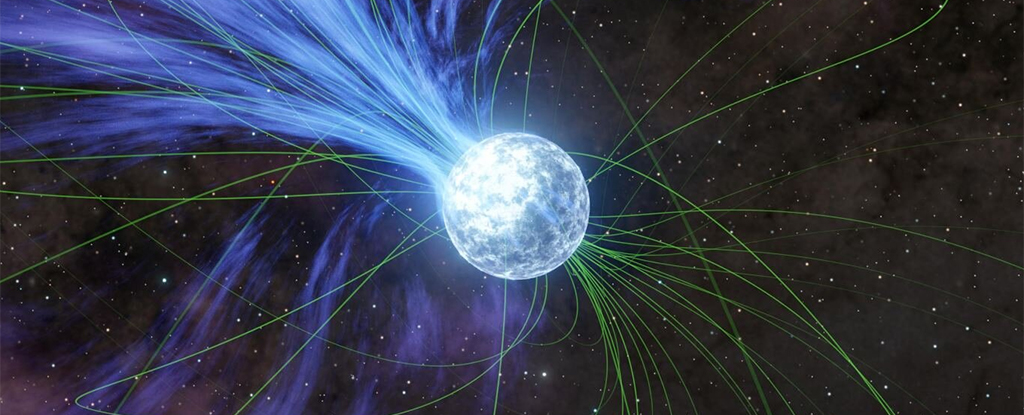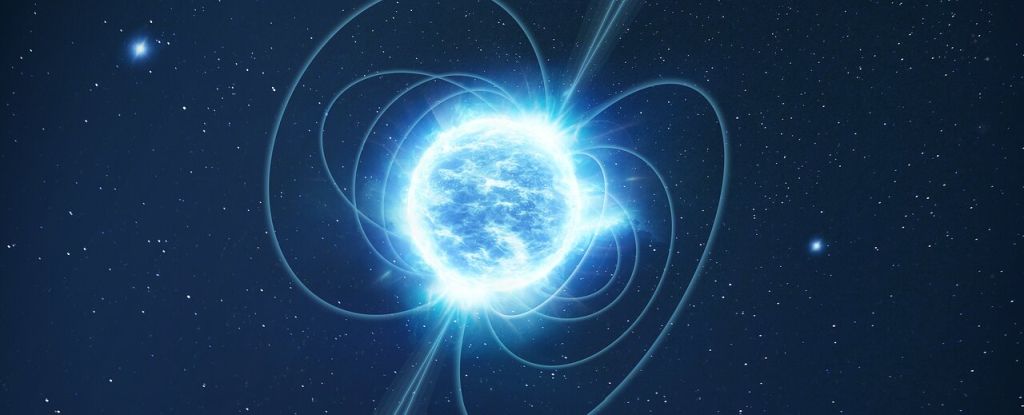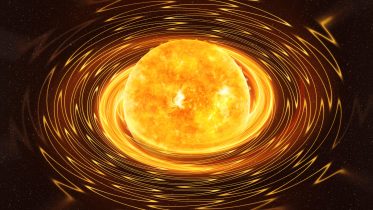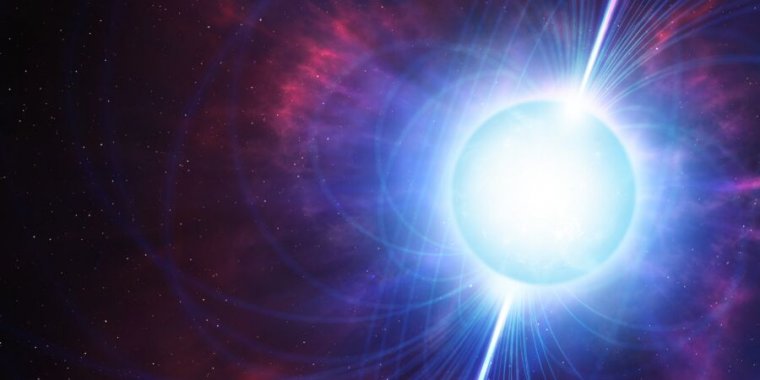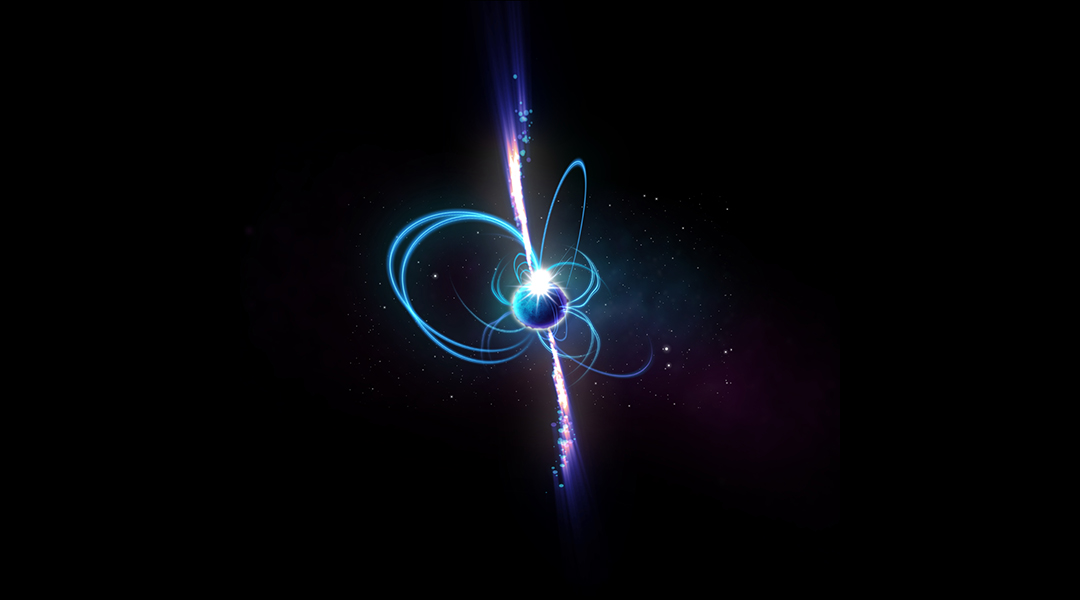
Magnetar
A magnetar is a type of neutron star with an extremely powerful magnetic field. The magnetic-field decay powers the emission of high-energy electromagnetic radiation, particularly X-rays and gamma rays. The existence of magnetars was proposed in 1992 by Robert Duncan and Christopher Thompson. Their proposal sought to explain the properties of transient sources of gamma rays, now known as soft gamma repeaters. Over the following decade, the magnetar hypothesis became widely accepted, and was extended to explain anomalous X-ray pulsars. As of July 2021, 24 confirmed magnetars were known. It has been suggested that magnetars are the source of fast radio bursts, in particular as a result of findings in 2020 by scientists using the Australian Square Kilometre Array Pathfinder radio telescope.

